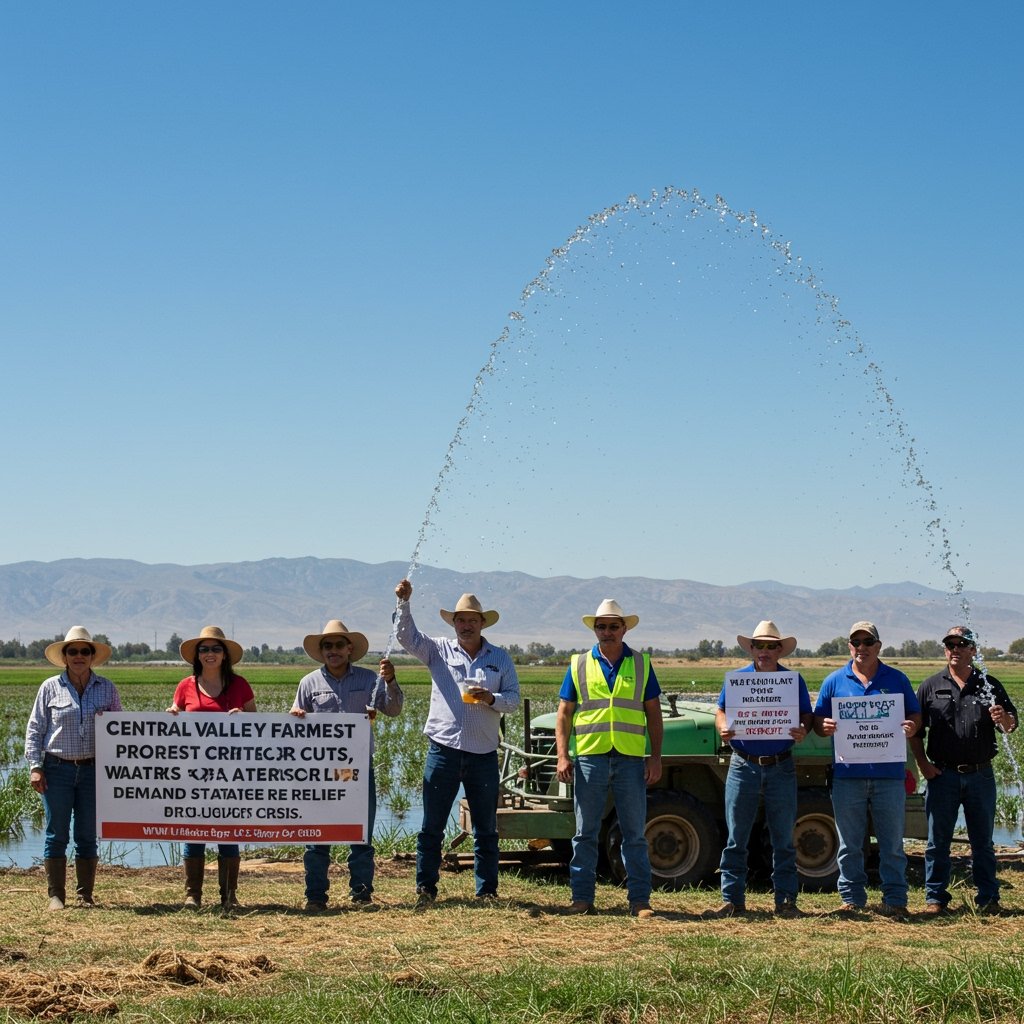Protests Erupt Across the Valley
Hundreds of farmers from California’s vital Central Valley region staged widespread protests on May 24th, a day after the State Water Resources Control Board announced drastic reductions in water allocations. Demonstrations took place in key agricultural hubs, including the cities of Fresno and Bakersfield, as farmers voiced their urgent concerns over the severe impact of these newly imposed restrictions.
The Regulatory Response and Its Impact
The catalyst for the protests was the State Water Resources Control Board’s May 23rd announcement, which detailed significant cutbacks in water availability for various users, particularly impacting agricultural users. The announcement outlined water allocation reductions that, in many districts, were reported to be often exceeding 60%. This sudden and substantial decrease in water supply is seen by the farming community as a direct threat to their livelihoods and the productivity of one of the nation’s most critical agricultural areas.
These deep cuts are a direct consequence of the persistent drought conditions plaguing California. State officials indicated that the need for such drastic measures stems from critically low reservoir levels across major water systems, specifically naming the Sacramento River and San Joaquin River systems. These systems are crucial sources of irrigation water for vast tracts of farmland in the Central Valley.
Farmer Concerns Mount
Farmers participating in the protests and speaking through their representatives expressed grave concerns regarding the immediate and long-term consequences of the reduced allocations. Many fear the cuts will inevitably lead to substantial crop losses across a wide range of commodities grown in the region. The inability to adequately irrigate crops can result in reduced yields, degraded quality, or complete failure, depending on the crop type and the severity of the water deficit.
Beyond just crop loss, farmers are deeply worried about the potential for financial ruin. Farming operations require significant upfront investment in seeds, labor, equipment, and other inputs. Without sufficient water to bring a crop to harvest, these investments are lost, potentially leading to bankruptcy for individual farmers and severe economic strain on rural communities that rely heavily on agriculture.
Agricultural representatives articulated a key grievance: the sudden nature and depth of the cuts. They argued that the rapid implementation of such severe restrictions significantly hinder their ability to implement alternative strategies or effectively adapt to the reduced supply. Unlike gradual changes, a sudden, deep cut provides little time to adjust planting schedules, change crop types, invest in more efficient irrigation technology, or fallow land in a planned manner. This lack of lead time exacerbates the economic hardship.
Calls for State Aid
In response to the crisis, agricultural organizations have called for immediate action from state leadership. The California Farm Bureau Federation issued a strong appeal to Governor Gavin Newsom’s administration, urging them to expedite the release of previously approved emergency drought relief funding. This funding, intended to help mitigate the impacts of drought, is now seen as critically needed to help farmers weather the current crisis, compensate for losses, or invest in long-term water-saving measures.
The Farm Bureau and other agricultural advocates stressed the urgency, stating that delays in aid would only deepen the financial woes faced by farmers already reeling from years of drought and increased operational costs. They position the need for expedited funding as essential for the survival of many family farms and the stability of the state’s agricultural sector.
State Officials Respond
State officials, while implementing the cuts, have publicly acknowledged the severe impact these restrictions have on the agricultural community and other water users. However, they have maintained that the cuts, despite their painful consequences, are unavoidable given critically low reservoir levels. They frame the decision as a necessary measure to preserve limited water supplies for essential human health and safety needs, as well as to protect critical environmental resources, during a period of unprecedented drought severity.
The State Water Resources Control Board explained that the allocation decisions are based on real-time hydrologic conditions and are necessary to manage the state’s limited water resources responsibly through the dry season. They reiterated that reservoir levels in key systems like the Sacramento and San Joaquin Rivers are at historic lows, leaving no alternative but to curtail diversions significantly for many water rights holders.
Ongoing Tension
The protests on May 24th underscore the deep tension between the need to conserve water during a severe drought and the devastating economic reality faced by California’s farmers. As the dry season progresses and reservoir levels continue to be monitored, the agricultural community remains under immense pressure, with calls for state support growing louder alongside the operational challenges posed by the significantly reduced water supply.








